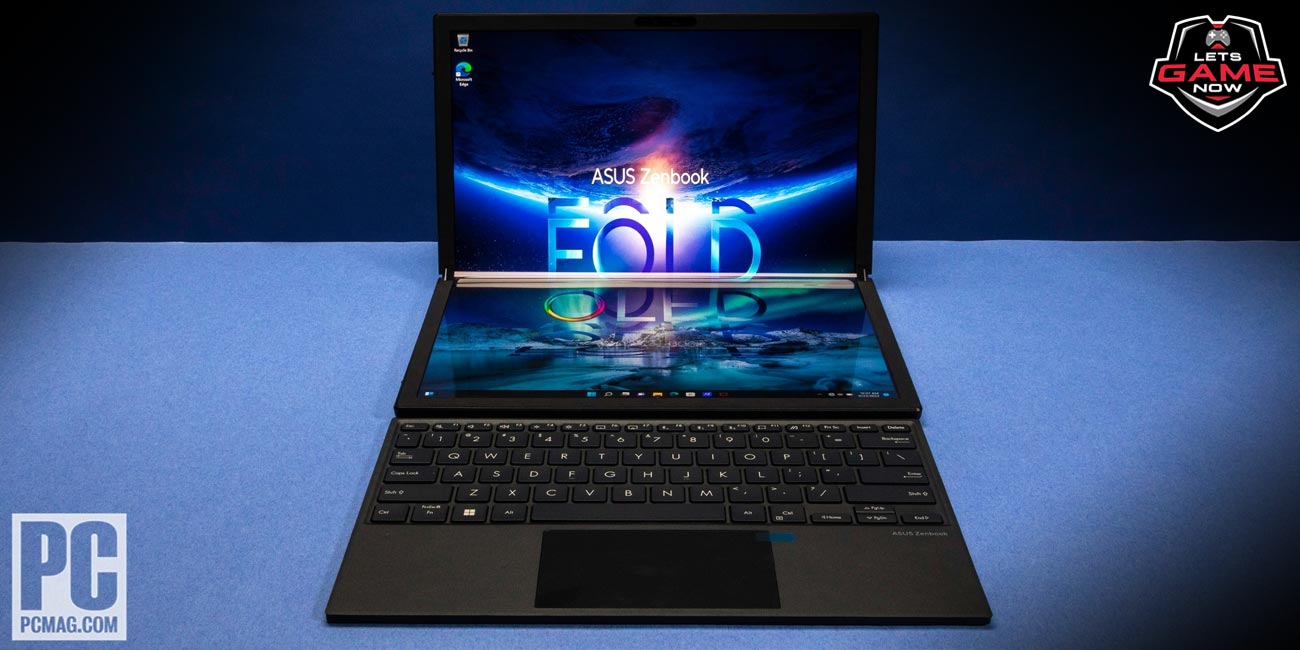


Noushin
Sep, 02.2022
The Asus Zenbook 17-Fold OLED ($3,499.99, arriving in Q4), intends to make a significant impression with its sheer size. With the supplied keyboard, the Asus foldable may also be used as a 12.5-inch laptop computer and has a 17.3-inch OLED display when completely unfolded.
The 17.3-inch foldable OLED display can be folded down to a 12.5-inch, 3:2 laptop when the supplied magnetic Zenbook keyboard is attached to the lower half of the screen, or it can be used in big laptop configuration with Windows 11's virtual keyboard.
According to Asus' website, the Zenbook's hinges have undergone 30,000-fold tests to launch this product. The Zenbook has a minimum port on its sides. The headphone jack, Thunderbolt 4 connector, power button, and the laptop's unfolded portrait orientation are all located on the top. For older peripherals or storage, Asus supplies a USB Type-C to Type-A converter in the box. It has a 1TB PCIe Gen 4 SSD, 16GB of LPDDR5 RAM, and an Intel Core i7-1250U processor.
The performance of CPU cores averaged 1.88 GHz throughout the Cinebench runs, while the eight efficiency cores performed at 1.3 GHz. The average temperature of the CPU package was 59.64 degrees Celsius.The Zenbook's foldable touchscreen is capable of displaying 108.5% of the more difficult DCI-P3 colour space and 153% of the sRGB colour range.
The Bluetooth keyboard and trackpad that are included with the Zenbook 17-Fold appear to have been taken from a standard laptop. It may be magnetised to the foldable's bezel to give it the appearance of a regular laptop. The keys are of a reasonable size. Bluetooth hotkeys from Asus allow you to move between several devices.
The trackpad is of perfect size at 2.5 x 4.1 inches. The speakers need some improvement. The keyboard of the Zenbook does not charge wirelessly while attached to the tablet. Close to the power button, is a USB Type-C connector for charging.
The camera is located on the left side of the bezel. Switching the Fold into a laptop mode, gives a much more appealing outlook of the images. It's direct, and with the correct lighting, passable colours are obtainable with sufficient details.
The Zenbook 17-Fold has the advantage of having Windows 11 pre-installed, which performs significantly better on this type of technology. Windows 11 functions far better with a finger or stylus than Windows 10 ever did, despite the fact that it is still not entirely touch-oriented.
The change in Windows 11's snap layouts, though, has the most impact. A touch-based, foldable design is far more versatile to use since it allows users to transfer apps to different sides or corners of the desktop rapidly (no pun intended).
The snap layouts work differently in Windows 11 enhancing the ability to quickly move programmes to various edges. This makes a touch-based, foldable design significantly more flexible to utilise. Asus doesn't need to install its own software on the device for it to work.
The future of computing may lie in foldable PCs, which are essentially portable all-in-one computers that can fit in a standard laptop bag. The flexible computer now has a better size and needs to focus on improving the design and lower the price. A $3,500 package needs to be robust, high-end, and without any compromises. But because foldables are still new, there are trade-offs.